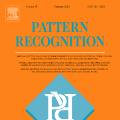Quantum Channel Discrimination (QCD) presents a fundamental task in quantum information theory, with critical applications in quantum reading, illumination, data-readout and more. The extension to multiple quantum channel discrimination has seen a recent focus to characterise potential quantum advantage associated with quantum enhanced discriminatory protocols. In this paper, we study thermal imaging as an environment localisation task, in which thermal images are modelled as ensembles of Gaussian phase insensitive channels with identical transmissivity, and pixels possess properties according to background (cold) or target (warm) thermal channels. Via the teleportation stretching of adaptive quantum protocols, we derive ultimate limits on the precision of pattern classification of abstract, binary thermal image spaces, and show that quantum enhanced strategies may be used to provide significant quantum advantage over known optimal classical strategies. The environmental conditions and necessary resources for which advantage may be obtained are studied and discussed. We then numerically investigate the use of quantum enhanced statistical classifiers, in which quantum sensors are used in conjunction with machine learning image classification methods. Proving definitive advantage in the low loss regime, this work motivates the use of quantum enhanced sources for short-range thermal imaging and detection techniques for future quantum technologies.
翻译:量子频道歧视(QCD)是量子信息理论中的一项基本任务,在量子读数、照明、数据读数等中具有关键应用。多量子频道歧视的扩展最近显示了一个重点,以说明与量子强化歧视性协议相关的潜在量子优势。在本文件中,我们研究热成像是一项环境本地化任务,其中热成像模拟成像为高萨级敏感频道的集合,具有相同的传输性,像素具有根据背景(冷)或目标(温)热信道的特性。通过适应性量子协议的远程传输延伸,我们对抽象、二元热图像空间的格局分类的精确度提出了最终限制,并表明量子强化战略可能被用来为已知的最佳典型战略提供重大的量子优势。研究并讨论了可能获得优势的环境条件和必要资源。然后,我们用数字式强化的统计分类器使用量子传感器,与机器学习图像分类方法一起使用。在低损率系统中展示明确优势,这项工作促使利用量子强化源用于短程热成像技术。




